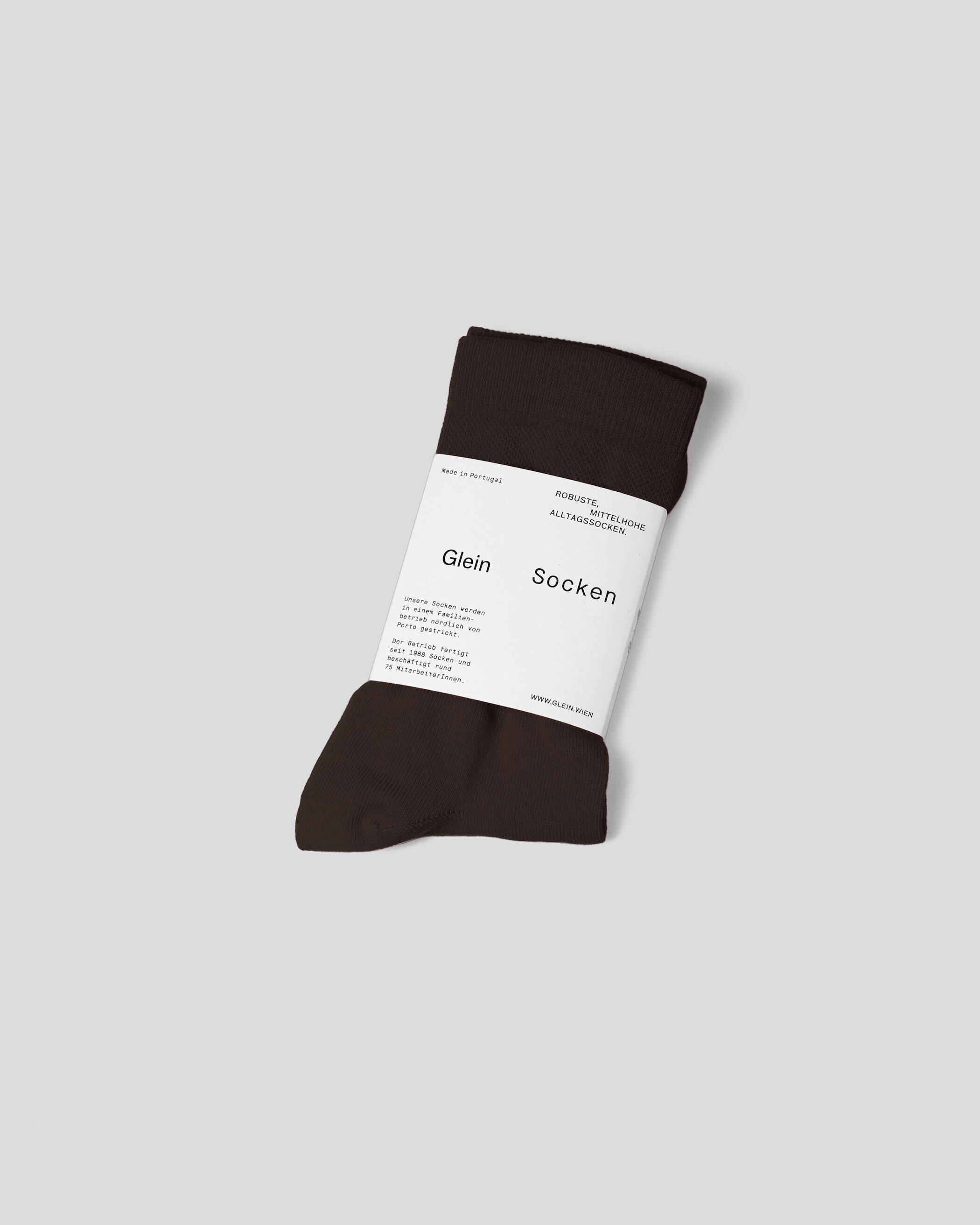Guide Organic Cotton
Glein Organic
Cotton
Guide

In a
Nutshell
Organic farming is carried out without the use of pesticides using only non-genetically modified seeds and organic fertilization. Crops are cultivated not in monocultures but in crop rotation. Farmers receive guarantees for their yields. Other features include controlled limits for wastewater and air purification, as well as dust and noise thresholds, fair compensation, and the prohibition of child labor.
History
The origins of planned cotton cultivation can be traced back to the Maya and Inca civilizations. While cotton was a luxury item in 16th-century Europe due to expensive manual production, the fiber gradually displaced linen and hemp after the invention of industrial spinning machines. Today, half of all clothing items are made from cotton, yet only 1% of this is organically produced.
Why choose organic
Cotton?
In contrast to conventional cotton, organic cotton:
- reduces water consumption by 91%
- lowers energy usage by 62%
- cuts CO2 emissions by 46%
- reduces the soil acidification impact by 70%
- decreases nutrient input into the soil by 20%
Soil Association, 2015, UN Climate Conference
Pesticides &
Emissions
Due to vulnerability to pests, conventional cotton cultivation employs synthetic pesticides. Often, extensive monoculture farming involves spraying each field around 20 times a year. Cotton farming therefore accounts for 10 to 20% of the global pesticide use while occupying only 2.5% of agricultural land. This practice jeopardizes biodiversity, harms soil, water, and the health of farmers. Even in finished textiles, many of these chemicals remain detectable.
Organic cultivation prohibits the use of chemical fertilizers and pesticides. Instead, it relies on gentle methods such as composting and preserving natural enemies of cotton pests. According to the Textile Exchange, organic cotton produces 46% fewer greenhouse gases than conventional cotton. By maintaining the soil's natural root biomass, it acts as a carbon sink, capturing CO2 from the atmosphere.
Genetic
Modifitcation
Globally, 70% of cotton plants are genetically modified. Although genetically modified cotton plants are resistant to certain pests and environmental conditions, their use entails risks: loss of genetic diversity, development of pest resistances, and dependence on seed manufacturers. Moreover, the cultivation of genetically modified plants cannot be precisely contained, as wind and insects can carry pollen for miles, potentially transferring altered genes to conventional plants.
In organic farming, cotton plants naturally produce seeds for new growth, enabling farmers to save costs on expensive seeds without relying on loans.
Water
Consumption
Cotton plants require above-average amounts of water and are oftentimes grown in dry regions under the use of irrigation. On average, producing 1 kg of cotton requires about 11,000 liters of water. The shrinking of the Aral Sea to a tenth of its original size is just one of many visible consequence.
The high water usage results from monoculture farming, poor site selection, and inadequate irrigation systems. Conventional surface irrigation leads to water evaporation. The more efficient method of drip irrigation also hydrates the soil beneath the surface. However, constructing such systems is costly and therefore challenging for farmers.
Organic farming projects, however, implement sustainable irrigation systems. Moreover, non-genetically modified cotton plants endure dry periods significantly better.
Working
Conditions
Ninety-five percent of cotton farmers reside in emerging and developing countries. Often, no protective clothing is worn during fieldwork, leading to severe injuries and even death. Child labor is widespread in conventional cotton farming, with children often working up to 12 hours in the fields. Threats of violence to meet harvest quotas are a common practice.
Purchasing organic cotton from independent small-scale farmers significantly improves living and environmental conditions in the production countries.
Our
Organic Cotton
We exclusively use top-quality, organically certified cotton that is manually cultivated and harvested without the use of genetic modification, chemical, or synthetic pesticides. Farmers employ beneficial insects and natural remedies such as Neem extract for pest control. Due to it's favorable climate and soil characteristics, Tanzania is particularly well-suited for organic cotton cultivation, where reliance on artificial irrigation can be largely avoided. To maintain soil fertility, biodiversity, and prevent soil erosion, our organic cotton is grown in crop rotation. Farmers receive fair compensation and insurance coverage in case of crop failure.
Drawbacks &
Alternatives
Even in strictly ecological cultivation, cotton remains a demanding plant with high water consumption. Additionally, emissions are released and energy is consumed during the spinning, weaving, and dyeing of raw cotton.
Alternatives to natural clothing fibers could be linen or hemp. However, certain characteristics of these plants, such as their irregular structure and the difficulty of industrial processing, still make them expensive counterparts.
Lenzing Modal, from which our 50/50 Jersey is developed, uses renewable beech wood, thus creating a particularly soft, resource-efficient fabric. Especially when woven with organic cotton, it results in durable, tactile jersey for t-shirts, sweatshirts, and sweatpants.
Recycling
Textile recycling as the reworking of fabrics has existed for centuries. However, today, clothing is produced so cheaply that disposal seems more feasible than labor-intensive repair in line with the concept of Circular Fashion.
In recycling, mechanical or chemical processes are now employed. While the plastic industry has been able to break down PET with enzymes for decades, the fiber mix in textiles poses a challenge. The majority of clothing comprises synthetics or fiber blends—such as cotton with polyester—or contains plastic seams, buttons, and zippers, all complicating recycling processes. Recycled fabrics available in the market are made from old plastic bottles rather than old fabrics, while used clothing is increasingly exported to Africa and Eastern Europe. However, these secondhand clothing donations are not always beneficial, threatening local textile production or ending up in open landfills. Kenya, Rwanda, Uganda, and Tanzania have thus attempted import bans on used clothing.
If old textiles are entirely made of cotton, recycled cotton can be extracted. However, the shortened fibers resulting from this process significantly reduce the clothes' durability, making it no definite solution despite using fewer resources than the cultivation and transportation of new cotton.
In summary, while recycling can contribute to resource conservation, the primary cause of overproduction of cheap, low-quality clothing remains unchanged.
Further Information
https://textileexchange.org
https://www.umweltbundesamt.at
https://www.eea.europa.eu
https://global-standard.org/de/der-standard/schluesselkriterien/bio-fasern
https://naturtextil.de/themen/bio-baumwolle/
https://www.umweltberatung.at/bio-baumwolle
https://umweltinstitut.org/welt-und-handel/slow-fashion-baumwolle/
https://www.aktiv-gegen-kinderarbeit.de/files/2011/01/Studie_Kinderarbeit_Indien.pdf
https://www.theguardian.com/society/2008/jun/08/childprotection.humanrights
https://orf.at/stories/3309020/
https://www.bbc.com/future/article/20230227-how-to-recycle-your-clothes
ttps://www.zeit.de/news/2022-02/01/kleidung-afrika-wird-zur-muellkippe-des-westens?utm_referrer=https%3A%2F%2Fwww.google.com%2F
Books
Piegsa, Edith: Green Fashion. Ökologische Nachhaltigkeit in der Bekleidungsindustrie. Hamburg: Diplomica Verlag 2010.
Gardetti, Miguel Angel / Muthu, Subramanian Senthilkannan (Hg.): Organic Cotton. Is it a Sustainable Solution? Heidelberg: Springer Nature 2018.
Classic Fit Jeans (washed indigo)

Classic Fit Jeans (washed black)




























